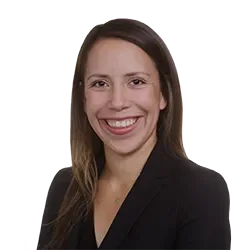ASAP
A Return to Work Roadmap for New York Employers
After weeks or months of remote work or closed operations, businesses are understandably eager to resume normal operations and bring employees back to the workplace. Employers must be mindful, however, of currently proliferating federal, state and local requirements governing the return to onsite work regarding safety, accommodations, leaves of absence and various benefits that are available to employees. This article reviews some of the many issues that New York employers must address as they continue essential operations and prepare to return to the workplace.
What are the reopening guidelines and orders relevant to New York employers?
On April 28, 2020, New York Governor Andrew Cuomo released guidelines that represent a phased plan to reopen New York State on a regional basis. This plan includes seven metrics that must be met for a region to begin Phase One of reopening (e.g., a 14-day decline in the hospitalization rate or an average of under 15 new hospitalizations over a 3-day period). As of May 20, 2020, seven New York regions had met the Phase One criteria: Central New York, Western New York, North Country, Finger Lakes, Southern Tier, Mohawk Valley, and the Capital Region.1
Businesses in the following industries are allowed to reopen in Phase One:
- Construction
- Agriculture, forestry, fishing & hunting
- Retail (limited to curbside or in-store pickup or drop off)
- Manufacturing
- Wholesale trade
To reopen, each business must conspicuously post a written Safety Plan that describes how it will prevent the spread of COVID-19 in the workplace.2 New York State has issued comprehensive and detailed reopening guidelines for each of the Phase One industries.3 Employers are required to review the state-issued industry guidelines and affirm that they will implement them using an online form.4 The guidelines include the following mandatory elements:
- Physical distancing – Employers must ensure six feet of distance between workers, unless safety or the core functions of the work activity require less distance. If individuals are working less than six feet apart, they must wear acceptable face coverings. For work occurring indoors, employers must restrict the workforce to no more than 50% of the maximum occupancy (as described in the certificate of occupancy), excluding supervisors from the calculation, unless additional personnel must be present for safety reasons and face coverings are used at all times. Employers are also required to post social distancing markers using tape or signs that define six feet of spacing in areas, and must limit in-person gatherings and hold essential gatherings in open, well-ventilated spaces with participants at least six feet apart.
- Protective measures – Employers must provide employees with an acceptable face covering at no cost to the employee and have an adequate supply of replacement coverings available. They must also limit the sharing of objects (e.g., tools, machinery, materials, vehicles) and discourage touching shared surfaces. Alternatively, employees must wear gloves, or sanitize or wash hands, before and after contact with shared surfaces.
- Hygiene and cleaning – Employers must provide and maintain hand hygiene stations for handwashing with soap, water, and paper towels, as well as provide alcohol-based sanitizer containing 60% or more alcohol for areas where handwashing is not feasible. Employers must also clean and disinfect the workplace at least after every shift, and ensure cleaning daily, or more frequently, of shared items and high-traffic areas, such as restrooms, payment devices, and common areas.
- Communication – As noted above, employers are required to affirm that they have reviewed, understand and will implement the relevant industry guidelines. They must train all personnel and clearly communicate the safety guidelines to them. Employers are also required to post signage throughout the workplace reminding personnel of social distancing rules, proper hygiene, appropriate use of protective measures, and cleaning and disinfecting protocols. They must also maintain a continuous log of every person who has been at the work site and may have had close contact with other individuals onsite, and notify potential contacts and the state and local health departments if a worker or someone on the log is determined to have tested positive for COVID-19. Potential contacts should not be notified of the identity of the individual who has tested positive.
- Screening – Employees who are sick must stay home, or return home if they become ill at work. Employers are required to implement a health screening assessment, such as a questionnaire or symptom check, before employees begin work each day as well as for essential visitors (but not customers). The screening process must include asking about an individual’s (i) COVID-19 symptoms, (ii) positive COVID-19 test results, and (iii) close contact with confirmed or suspected COVID-19 cases, during the preceding 14 days. Employers must document a daily process for reviewing the responses to these screening questions. If an employee confirms any of the three criteria, the guidelines provide additional steps to be taken.
The New York State guidelines set forth minimum requirements. Employees or others may request additional or stricter safety measures as they return to work. Employee input may be a valuable component of a reopening plan, particularly where employees have more direct knowledge of how certain tasks or processes are carried out or how they can be improved. In addition, third parties, such as landlords, property management companies, customers or co-tenants, may also impose safety-related requirements. As of this writing, New York State has not published reopening guidelines for industries in Phases Two through Four.5
What leave of absence considerations should employers keep in mind when reopening?
The easing of restrictions will result in many employees returning to work in the next few weeks and months. While some employees will be excited to return to work, others may express fear or anxiety. However, the question of whether paid leave is available to an employee who refuses to return to work or who suddenly faces increased childcare responsibilities is likely to depend on their eligibility for paid leave under applicable city, state and federal leave laws. There have been many changes in this area over the past few months. We discuss several common considerations, below.
Employees who refuse to return to work:
In general, employers are under an obligation to provide workers with “employment and a place of employment, which are free from recognized hazards that are causing or are likely to cause death or serious physical harm.”6 Moreover, employees should feel comfortable and safe at work. Uncomfortable workers are likely to be distracted and less efficient, which may, in turn, result in unsafe conditions.
Still, refusing to return to work after being called back by an employer, by itself, is not a qualifying reason for paid time off under the Families First Coronavirus Response Act (FFCRA).7 Rather, an employee who claims they cannot return to work based on a general fear of contracting COVID-19 will not qualify for FFCRA emergency paid sick leave (EPSL) unless they otherwise meet one of the six stated bases for taking leave.8
Likewise, an employee can only claim paid leave under New York State’s COVID-19 Sick Leave Law if they are subject to a mandatory or precautionary quarantine or isolation order9 and are unable to telework. On April 19, 2020, the New York City Commissioner for Health and Mental Hygiene made it somewhat easier for employees to obtain such an Order, by posting a signed Order on its website. However, the corresponding FAQs make clear that this Order is only available to employees who: (a) have tested positive for COVID-19; (b) have symptoms of COVID-19 and were in contact with someone who tested positive; or, (c) meet another qualification for mandatory isolation by the New York City Department of Health, the New York State Department of Health, or the Centers for Disease Control and Prevention. Thus, an employee simply refusing to come to work would not qualify for New York COVID Leave.
Employees may also be entitled to New York City’s Earned Safe and Sick Time leave (ESSTA). Under ESSTA, eligible employees who work for an employer for at least 80 hours in a calendar year are entitled to accrue up to 40 hours of paid sick time per year, which begins accruing on day 1 of employment and can be used beginning 120 days thereafter. Employers with five or more employees must provide this as paid sick time, while employers with fewer than five employees may provide this as unpaid leave. The Department of Consumer and Worker Protection has issued guidance explicitly stating that ESSTA leave can be used for sickness, quarantine, or for other uses related to COVID-19. Because the documentation requirements for ESSTA leave are comparatively light, it is conceivable that an employee may seek ESSTA time to cover a brief absence prior to returning to work, even if they have not been diagnosed with or symptomatic for COVID-19.
Employees who become ill or are caring for someone who is ill with COVID-19:
Employees who become ill with COVID-19, are ordered to quarantine, or are caring for someone who is ill with COVID-19 after their workplace has reopened, may be eligible for FFCRA, New York State COVID-19 leave, New York Paid Family Leave, New York City or Westchester Earned Sick Time or short-term disability leave under company policy. (Please see our Roadmap discussing these issues10).
Also, beginning January 1, 2021, employees may be eligible to use sick leave provided under the April 3, 2020 amendments to the New York Labor Law. The amount of leave available will depend on the employer’s size. Leave may be taken for both sick and safe time reasons, including for an employee’s or employee’s family member’s mental or physical illness, injury, or health condition, regardless of whether such illness, injury, or health condition has been diagnosed or requires medical care at the time that the employee requests the sick leave; or for an employee’s or family member’s diagnosis, care, or treatment of a mental or physical illness, injury or health condition, or for preventive care.
Employees whose normal childcare (e.g., camp or school) is closed or unavailable:
Finally, as parents wait to see whether summer camps and programs will be canceled, employers should bear in mind that parents of school-aged children may qualify for paid emergency FMLA leave (EFMLA) should a child’s “place of care” become unavailable. The regulations and the DOL’s FAQs define “place of care” to include any “physical location in which care is provided” while the employee works, including, for example, preschools, day care facilities, respite programs, and summer camps and summer enrichment programs. In such a case, employees would be eligible for EFMLA leave as long as they have been employed for at least 30 calendar days by the employer.11 However, the DOL has clarified that this leave is only available to employees who “need to, and actually are” caring for a child and are “unable to telework” as a result of the closure. Therefore, if a “co-parent, co-guardian, or [a] usual child care provider is available to provide the care the child needs,” EFMLA is not available.
On the other hand, the New York Department of Labor has clarified that a school closure is not a qualifying reason for an employee to take New York Paid Family Leave or disability benefits. Rather, these benefits are only available if the employee or their “minor dependent child [is] subject to a mandatory or precautionary order of quarantine or isolation issued by the State, department of health, local board of health, or government entity.”
What should employers know about workers’ compensation?
In New York, workers’ compensation is the exclusive remedy for employees who suffer an on-the-job injury or illness. As a result, employees are generally barred from seeking civil damages in private lawsuits for a Workers Compensation Law (WCL) covered injury. Covered injuries include occupational diseases, which are defined by the New York Workers Compensation Board as a disease that “arises from the conditions to which a specific type of worker is exposed. The disease must be produced as a natural incident of a particular occupation, such as asbestosis from asbestos removal.”12
Employees who have suffered an occupational disease are eligible for coverage of lost wages and medical expenses. Currently, New York, unlike other states,13 has not specified whether COVID-19 qualifies as an occupational disease. However, various amendments have been proposed to the WCL that may change this in the near future. For example:
- Assembly Bill 10401 – Includes exposure to novel coronavirus as an occupational disease for which compensation shall be payable for disabilities sustained or death incurred by an employee.
- Senate Bill 8117A – Considers the disablement of an essential employee during COVID-19 outbreak as an accident for workers’ compensation and imposes liability on the employer for 50% of the claim.
- Senate Bill 8266 – Includes exposure to COVID-19, as an occupational disease for which compensation is payable for disabilities sustained or death incurred by an employee.
Furthermore, the chair of the New York Workers’ Compensation Board issued a letter on April 15, 2020, to Carriers and Payers of Workers’ Compensation claims urging them to consider using WCL § 21-a (providing for payment without initially accepting liability) if they are unsure as to whether a claim is compensable, even with a medical report, whenever possible, rather than disputing the claim in order to resolve claims quickly and pay appropriate lost wage, medical, and death benefits.
As employers consider continuing remote work for some segments of their workforce even after reopening, they should keep in mind that under the WCL, an employee’s home may be treated as the workplace when the employee regularly works from home with the employer’s knowledge and for the employer’s benefit. However, remote workers who are diagnosed with COVID-19 while at home may find it challenging to establish that COVID-19 is an occupational disease. In contrast, employees in certain industries, like health care, who are routinely exposed to COVID-19 patients as part of their job duties, will likely have an easier time establishing they contacted COVID-19 as a natural result of working closely with patients who have COVID-19.
Employers may be concerned about funding workers’ compensation claims based on current financial circumstances. Notably, Governor Cuomo issued an executive order on March 29, 2020, imposing a moratorium on workers’ compensation insurers cancelling, non-renewing, or conditionally renewing policies issued to certain employers facing financial hardship as a result of the COVID-19 pandemic. To ease the processing of claims at a time when the health care system is significantly strained, New York has also issued an Emergency Rule re COVID-19 and Telemedicine for Workers Compensation authorizing the use of telemedicine where medically appropriate to assess current disability status.
To mitigate the expected uptick in workers’ compensation claims and help contain liability if employees get sick on returning to work, employers should ensure that they have policies and procedures in place for:
- Identifying and isolating employees who have contacted COVID-19 and may spread it to others;
- Prompt self-reporting of employee COVID-19 diagnoses and symptoms;
- Contact tracing and employee notification of potential workplace exposures;
- Encouraging symptomatic employees to stay home in order to curb the spread of COVID-19 in the workplace.
How can employers use unemployment insurance to their advantage?
Maximize the $1,104 available in benefits until July 31, 2020, to supplement wages.
Employers may not be ready or able to bring their entire workforce back on a full-time basis due to the economic circumstances caused by COVID-19. Unemployment insurance (UI) may help employers keep some employees on a part-time schedule and/or on furlough, without risking losing those employees. New York unemployment benefits (capped at $504 weekly), plus the federally funded Pandemic Unemployment Compensation (PUC) provided through the CARES Act (a flat $600 weekly payment), provides employees in New York up to $1,104 in weekly benefits until July 31, 2020 when PUC sunsets. An employer may decide it is best to delay reopening or conduct a slow opening while these increased benefits continue to be available to their employees.
Be considerate of part-time schedules and the fact that weekly UI in N.Y. is reduced by 25% for every day an employee works.
An employer that decides to bring employees back on a part-time basis should be strategic about scheduling these employees given the effect on UI benefits. A New York employee who has suffered a reduction in hours is eligible for partial unemployment benefits as long as they do not work four or more days per week or earn more than $504 per week in wages. For every day (or partial day) an employee works, their weekly N.Y. UI benefit is reduced by 25%. From a retention perspective, employers bringing employees back on a part-time basis should consider scheduling their employees in a way that permits them to maximize their benefits. For example, employers should avoid asking an employee to work a half-day, as that will automatically reduce the employee’s weekly benefit by 25%. Employers may also want to cap days worked at three days per week so that the employee continues to receive 25% of their weekly New York UI benefit plus the $600 PUC payment.
Consider Shared Work
An employer considering a part-time schedule may also consider using a New York workshare program. A workshare program allows employees to “share work” when the work available is limited due to an economic downturn. An employer may reduce work hours by 20%-60% for the entire workforce or a specific department and employees can continue to earn wages as well as collect a percentage of their weekly New York unemployment benefits and the $600 weekly PUC payment. Because there is no cap on wages within a workshare program, an employee can earn more through workshare than through part-time work. Employers can submit the two-page application to participate in workshare here. The employer is required to notify its workforce of its plan to engage in workshare, and must obtain union approval if its workforce is unionized.
Be considerate of UI benefits but be watchful of UI fraud and abuse.
The flipside of unemployment insurance right now is that the benefits are at such a level that many employers are experiencing what they believe is unemployment insurance fraud. Some employees are refusing to return to work in order to continue to collect benefits, or employees are continuing to collect benefits after the employer recalls them to work. Generally, this is not allowed and employees may suffer criminal penalties as well as the obligation to return funds if they are found to be engaging in fraud. Employers may report suspected fraud to the Department of Labor, Liability and Determination Section. More commonly, an employer may respond to suspected fraud after the employee has submitted an application for benefits and the employer has the opportunity to report any discrepancy in wages or disqualifying information through form LO 400 in response to the employee’s filing.
Note, however, that employees may still be eligible for federally funded Pandemic Unemployment Assistance (PUA) if they quit their employment for good cause—e.g., if they quit because of lack of daycare and school due to COVID-19 or if an underlying health condition makes the risk of returning to work too severe. Although the employee may not be eligible for traditional New York unemployment benefits, they may be eligible for PUA and PUC in these situations.
Recommendations
This article discusses just some of the many issues that New York employers will face as they reopen. Employers should consult with counsel to create a Safety Plan tailored to their business that satisfies the industry-specific guidelines published by New York State and includes a Communicable Disease Policy.



